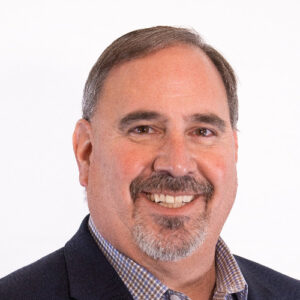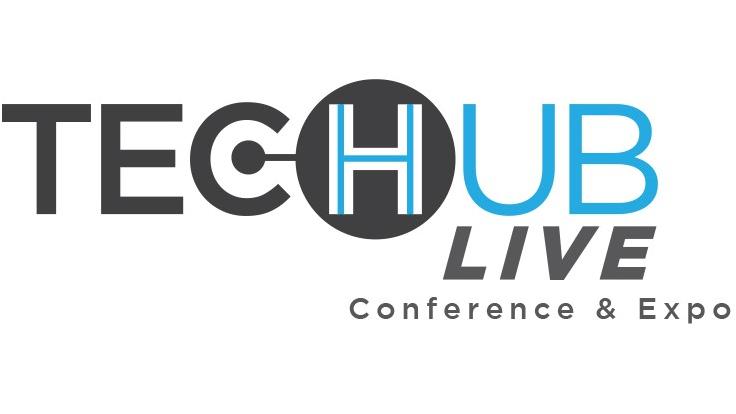5 Questions with Topcon’s Michael Gomes on Farm Data Management and Interoperability
The digital transformation of agriculture has been ongoing for some time. Active in that transformation for more than 25 years is Topcon’s Michael Gomes.
Gomes knows all too well that farmers are continuously challenged to put in place the correct pieces of the puzzle to increase yields and maintain profitability – while throwing data into the mix.
We had a chance to catch up with Gomes, who will be part of the robust educational programming at an event that has been described as the intersection of agronomy and technology – the inaugural Tech Hub LIVE Conference and Expo to be held July 20-21 in Des Moines, IA.

Michael Gomes, Topcon
Gomes is Vice President of Business Development – Agriculture for Topcon and serves on the federal task force for Connectivity & Technology Needs of Precision Agriculture under the Federal Communication Commission (FCC). He is involved with several industry organizations, too, including the Association of Equipment Manufacturers, the Ag Data Coalition, and Meister Media Worldwide’s PACE Advisory Council.
Gomes will participate in an executive roundtable presented in conjunction with the Association of Equipment Manufacturers. He will join fellow panelists Julian Sanchez, Director, Emerging Technology at John Deere; and Darryl Matthews, Senior Vice President at Trimble Inc., to talk about what’s happening now and what’s next for ag equipment and technology companies.
1. What are some highlights you can share that will be covered at your Tech Hub LIVE session?
Michael Gomes: Our panel will talk about getting to data and data layers beyond yield. Everyone talks about yield, yield, yield. I get it. Yield is a huge component of the farm, but so is profitability.
A huge number of smart-connected machines are used today, and the biggest challenge for the grower is trying to make sense of it all. The grower needs to learn what should be focused on — what helps to drive his business. So, the focus of our panel discussion is understanding the elements of interoperability — the data layers.
Specifically, we will talk about what is being done to make things easier for the customer, easier for the user, and easier to integrate data layers from different industry vendors. As we know, the company that makes the best planter may not make the best sprayer, combine, or the best grain system. The farmer has to utilize these different data layers and determine how they will fit together.
The panel will discuss these elements and what that means as it relates to things like the interoperability of the data layers. In a complex workflow, if you are going to do in-season, just-in-time plant nutrition, understanding when the rain is coming plays a huge role in the process. What you’ll notice is there are many elements of complex systems beginning to loom in. So, the farmer needs to understand interoperability, timing, and relevance within the workflow.
2. What are some of the big issues for the equipment industry related to data management and interoperability?
Michael Gomes: Access to remote connectivity is an issue. I sit on a federal task force within the FCC that is helping to develop standards for remote connectivity. First, it’s important to determine where it is and where it isn’t. In the U.S., connectivity is woefully inadequate, and it doesn’t take long to find people who say, ‘Oh, I must live in the part of the map where the connectivity isn’t because it’s not very good.’
The second thing relates to the types of connectivity and determining the data layers needed. Two things need to be considered: What you need versus what you want. A certain amount of data is necessary to operate a farm or a business, and it is needed immediately. There’s also a need for a library for longer term, but it isn’t required immediately or in big quantities. People need to know the difference and what they actually need.
Another issue is with automated systems and access to information. For example, in automated systems, you don’t need to know when things are working and what they’re doing. You just need to know when something stops working.
At Topcon, we work with original equipment manufacturers or even end users to understand what you need to know from your automated systems and who from your operation needs to know. Keep in mind the finance people may want to know one thing and the operation people may want to know another. It’s the same information or the same data, but it’s needed in different formats. The farm must figure out how to disseminate the information in the proper format to each person, and that’s a difficult process.
3. What are some things Topcon is working on that you can share?
Michael Gomes: At Topcon, we are working on several things around that element of interoperability, including the Smart Grain Cart, which helps with harvest reports. This year, we have been working with MyAgData, a cloud-based data system, to help bring together the data layers, which means being able to use the planting data layers for your government submissions to using the data from the Smart Grain Cart for crop insurance or uses downstream.
For us as a manufacturer of sensors and systems and pieces of solutions, it’s not just making the right tools, it’s being able to use and leverage the value of the data coming off those tools. We’ve been a strong supporter of interoperability of data layers because we believe in open architecture. We believe your ability to enable and to have that interoperability of data layers is important.
The next level will incorporate what that means from a user experience. We need to figure out how can we work with other companies within our industry to make this easier – not harder – because that’s what the farmers and ag retailers need.
4. What has been the silver lining for the agriculture industry coming out of the COVID-19 pandemic?
Michael Gomes: As a person who lives in California, the high-tech community has a hard time understanding agriculture, mainly because they don’t understand that ag has annual production cycles and of course sometimes it’s a wet year or a dry year. So, as person with a career in high tech, I can say the best silver lining for ag coming out of the COVID-19 pandemic is that ag is essential and people are beginning to understand why ag is different.
In our industry, you’re seeing digital platforms from both the big equipment providers, as well as the large input providers of seeds and chemicals, and those have typically been in two different houses in our industry. What’s happening now is business models are emerging.
It’s no longer capital asset versus operational. You’re seeing people looking at subscriptions-based businesses that create value which used to be covered by both elements of the operational budget and elements of the capital assets budget.
It’s those changing business models that are reshaping our thinking. Essentially, COVID-19 changed more organizations than any CEO or CTO could. It moved an industry. You’re seeing elements of these things beginning to move our businesses or at least challenge those business models under which we operate.
 5. What advice can you offer Tech Hub LIVE attendees while they are at the show?
5. What advice can you offer Tech Hub LIVE attendees while they are at the show?
Michael Gomes: My first piece of advice is to meet someone new at the show, and the second piece of advice is to meet someone young. There is so much opportunity and innovation being focused on right now, and our industry is filled with opportunity.
We are beginning to see an influx of young people who are attracted to our industry, and we have to keep an open mind. We don’t know everything, and we can learn from other industries to make us stronger on our journey.





